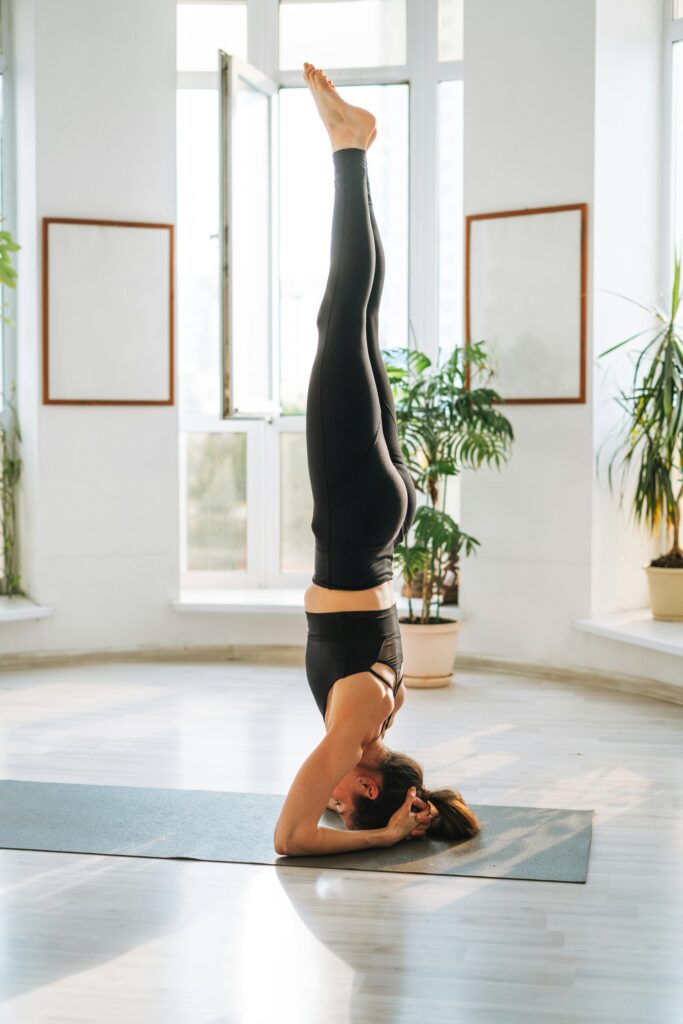Yoga is used throughout the world to maintain a healthy body and mind, and has been for centuries. In recent years, it has increasingly gained popularity, thanks to people becoming more informed about its benefits. The ancient, sacred practice currently has around 300 million devotees worldwide, and with so many people taking part, yoga must be doing something right.
An inclusive, invigorating practice, yoga isn’t affiliated with a religion, belief system, or community, instead welcoming anyone to practice it and to reap its benefits without restriction. There are different types of yoga that have different aims and objectives to benefit those that practice each style, but the overarching theme is one of harmony; with the body, the mind and the universe.
If you’re keen to learn more about this amazing discipline, then read on; from Hatha to Vinyasa, here are 7 potential benefits of regular yoga practice.
Strengthen Mental Capacity
Yoga has long been used to calm the mind, but amazingly, the ancient practice has the ability to strengthen the mind, too. Studies have found that experiencing a meditative state through practicing yoga can thicken the cerebral cortex – the part of the brain that controls awareness, attention, memory, thoughts, and language – when practiced over a long period of time.
It’s this single intention to align my mind, with my body, with my breath that shouldn’t be underestimated, with this particularity of thought able to bring about that sense of serenity and clarity of thought so often associated with yoga and mindfulness practice.
In fact, that slowing of brain activity associated with both meditation and that peaceful final Savasana pose during yoga, has been shown to increase IQ, too. A study titled Consciousness and Cognition, via Inc.com, showed after four days of meditative practice, shows ‘’significant improvements in memory, cognition, and lowered stress levels.”


Increases Muscle
The importance of building and maintaining muscle shouldn’t be underestimated; we have 600 in the human body, and having healthy muscles and bones contributes to better balance, stability and increased energy levels.
Not everyone likes to weight train, but did you know that regular yoga practice can not only increase your muscle mass but also your strength?
What’s more, building muscle strength through yoga is done in combination with improving your flexibility; two birds of paradise, one rock pose, you could say!
This isn’t something you would necessarily achieve merely by lifting weights. Yoga relies on eccentric contraction, leading to a toned physique. Whilst doing this, your muscles and joints increase in flexibility. What’s not to love?
Helps to Maintain Spinal Health
Yoga is considered a safe form of exercise as it’s generally not high intensity. As such, it can help your spine, and not just from the obvious muscle and strength improvements.
As we become older, the discs in our spines are prone to degeneration. It’s something that naturally occurs, although it can be delayed and further damage prevented with a good diet and exercise.
Many practitioners have found yoga particularly beneficial for managing spinal conditions. When used alongside traditional medical approaches, gentle yoga practices have shown promise as part of scoliosis treatment in adults, helping to improve posture and reduce discomfort through controlled, symmetrical movements.
Yoga can positively impact your spinal discs, which are like shock absorbers. By incorporating yoga into your life, you can help them remain supple and less likely to herniate. If this occurs, it could lead to disc compression, slipped discs, cauda equina syndrome, or a number of other painful conditions, which could result in requiring an operation.
Yep, this one comes approved by orthopaedic experts. According to Dr. Rachel Rohde, a spokeswoman for the American Academy of Orthopaedic Surgeons and an orthopaedic surgeon for the Beaumont Health System in Royal Oak, via Medicine Net, “Yoga is great for flexibility, for strength, and for posture and balance.”
With gentle bends and twists, you’ll be helping to keep your discs supple and potentially avoiding future back pain. However, before embarking on any form of physical activity, you should seek advice from a physician or other qualified medical professional.


Improves Balance & Posture
The practice of yoga naturally enhances your balance and postural alignment through its emphasis on controlled movements and held poses. Many yoga poses require you to maintain stability while distributing your body weight in various positions.
Through regular practice, you develop stronger core muscles and greater body awareness, which translates to better posture in your daily activities. Standing poses like Tree Pose (Vrksasana) and Warrior poses help practitioners find their center of gravity while strengthening the muscles that support proper alignment of the spine and pelvis. Since balance tends to decline with age, incorporating yoga into your routine can help maintain this essential physical skill throughout your life.
Promotes Healthy Blood Flow
Yoga can also help with blood flow around your body, especially in your hands and feet. This is down to the fact its practice promotes better oxygen flow around your body.
Stretching exercises are said to increase oxygen flow around your body as well as rid it of blood that’s deoxygenated. Inverted exercises encourage this type of blood to flow back to the heart before it reaches the lungs to become oxygenated. This can reduce swelling and other conditions.

Raises Your Heart Rate
Any physical activity will generally increase your heart rate, and that’s essential for your health. This is because regularly getting your heartbeat faster than its resting rate helps train your heart to circulate nutrient rich blood and oxygen around the body properly.
Some forms of yoga can get the blood pumping more than others, although practicing any form of yoga will generally increase your heart rate. That said, some of the most popular high-intensity yoga practices include Ashtanga, Vinyasa flow, Bikram and more recently, a kind of hybrid, high intensity practice called HIIT Yoga.
Despite yoga not being high intensity, it can increase your resting heart rate, endurance, and increase oxygen intake by as much as 144%.
These advantages are similar to what you’d experience with aerobic exercise.


Reduces Hypertension
Often known as the silent killer, hypertension, more commonly known as high blood pressure, is rife in society. Caused by many issues, including smoking and stress, many people have no choice but to take medication to reduce this potentially deadly condition.
Yoga poses involve breathing in a certain pattern which studies have found, over time, can not only reduce blood pressure but also relieve stress, one of the potential causes of hypertension, itself.
One particular study conducted by The Lancet, a renowned British Journal, found that participants who practiced Savasana for three months found their blood pressure lowered. On average, participants’ systolic blood pressure rate, which is the figure on the top of your blood pressure reading, dropped by an amazing 26mmHg. Their diastolic rate decreased by 15mmHg.
If that’s piqued your interest and you’re ready to start on your yoga journey, check out these 6 IDEAL tips for yoga beginners on how to get started.




